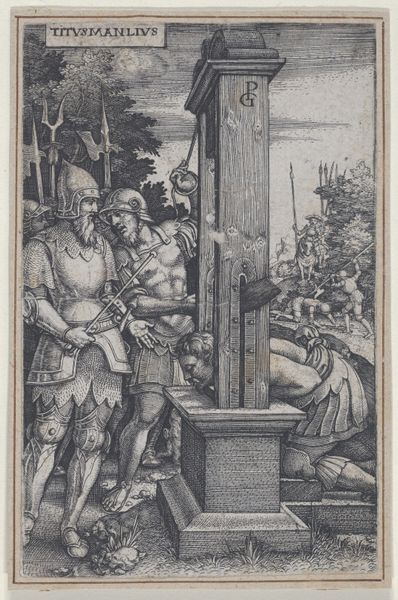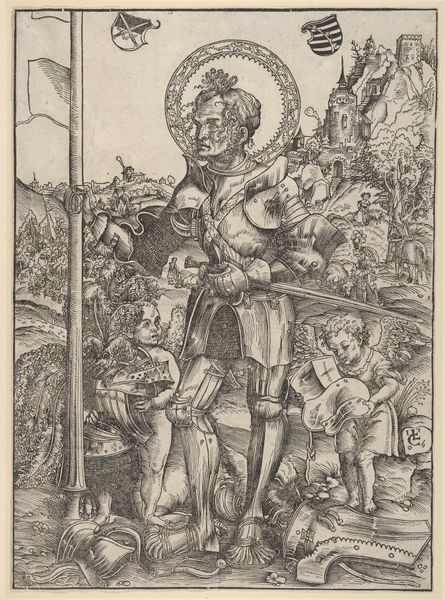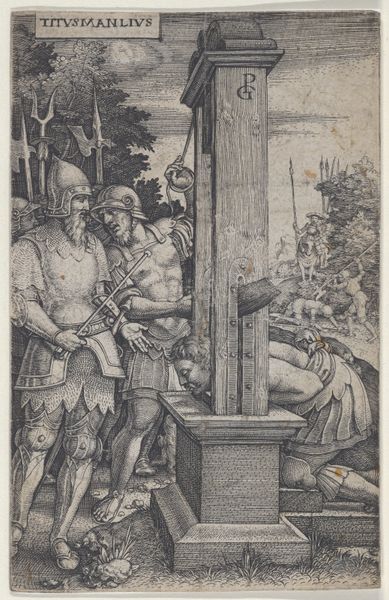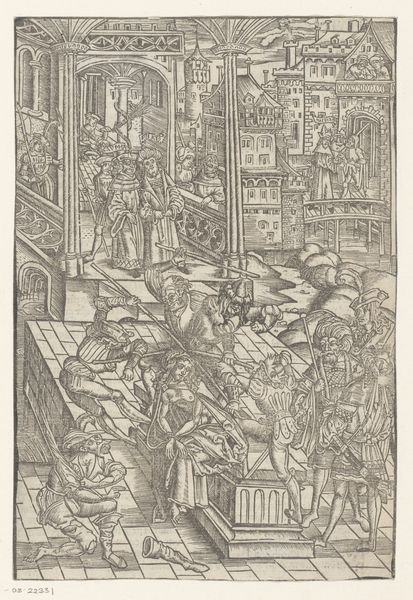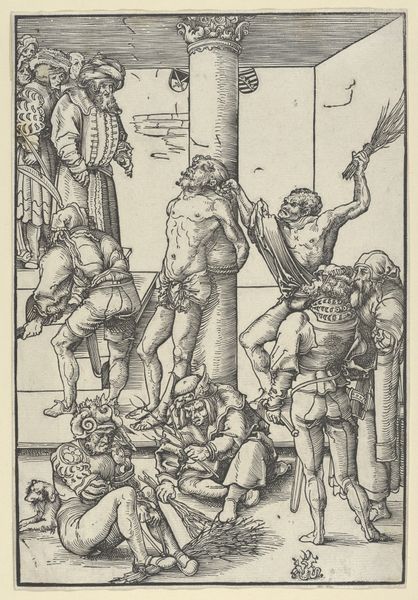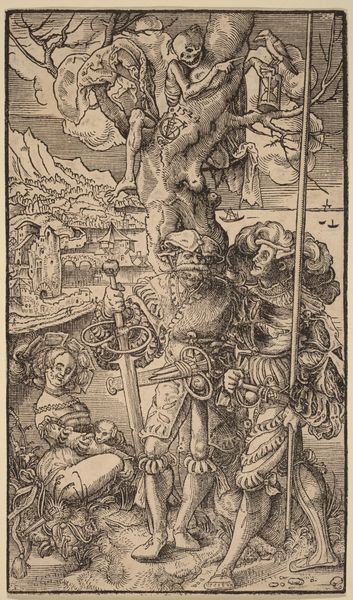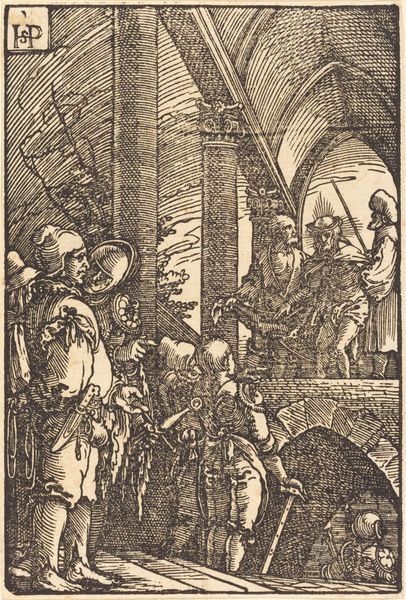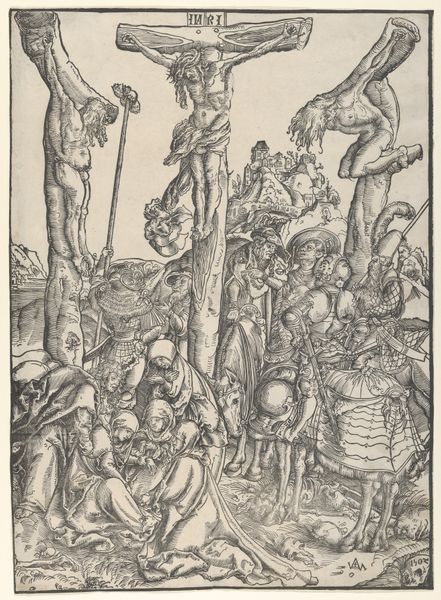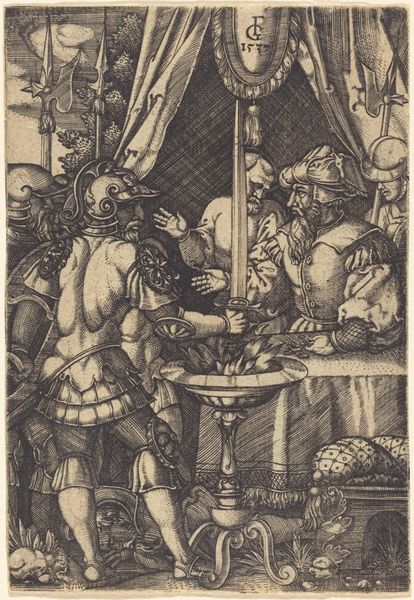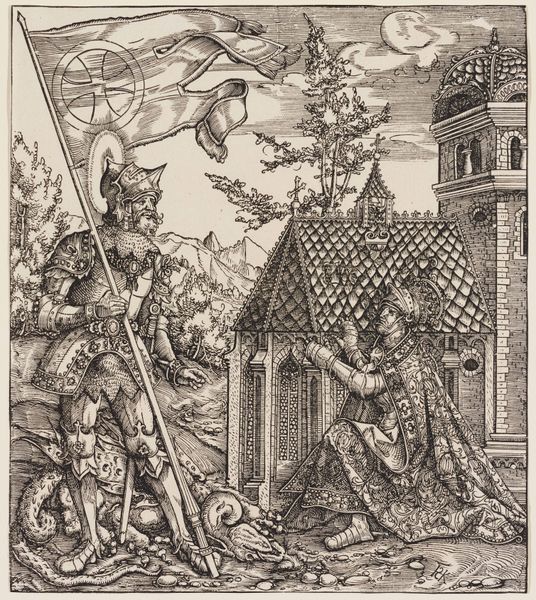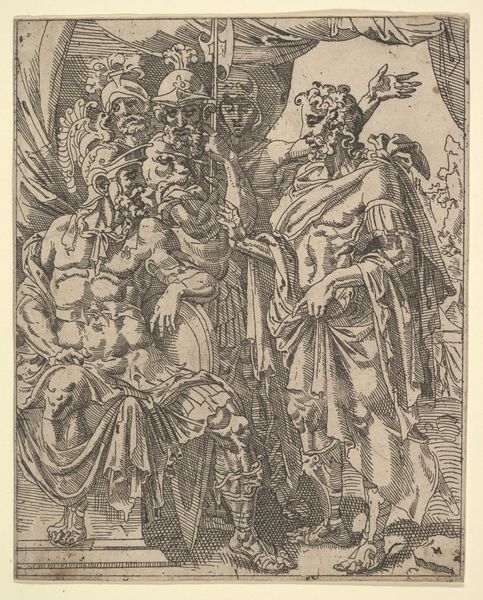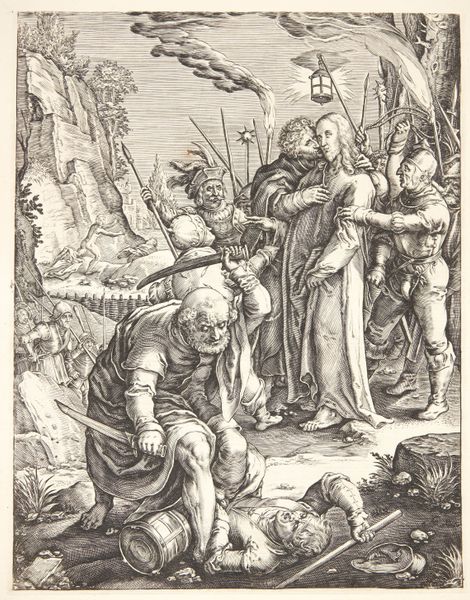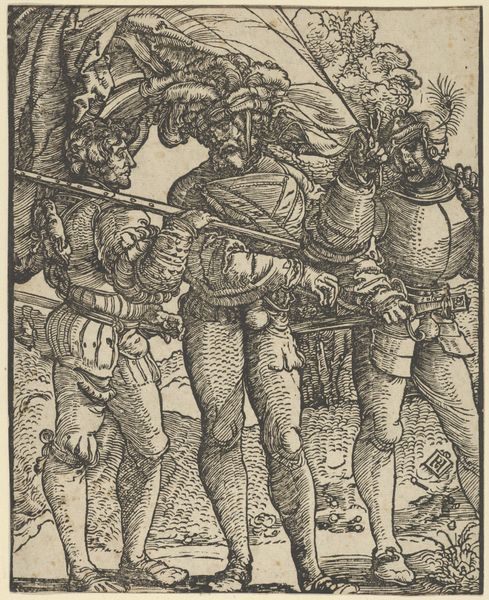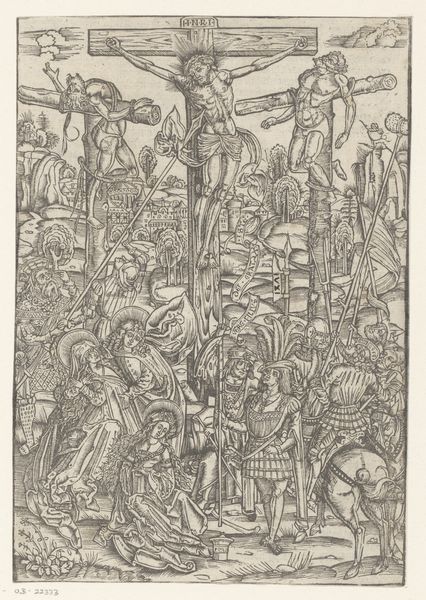
drawing, print, paper, engraving
#
drawing
# print
#
figuration
#
paper
#
line
#
history-painting
#
northern-renaissance
#
engraving
Dimensions: 113 × 72 mm (image/plate/sheet)
Copyright: Public Domain
Curator: This engraving, crafted by Heinrich Aldegrever in 1553, is titled "Titus Manlius Beheading his Son". Editor: Whoa, even in monochrome, that’s intense. There's this… stark, almost brutal quality to the scene. It makes me shudder a little. The composition feels so rigidly staged, which kind of amplifies the horror, doesn't it? Curator: The work reflects the artist’s fascination with classical history and the Roman ideal of civic virtue. Titus Manlius, as a figure, embodies the severe demands of duty to the state, even above familial bonds. Editor: Duty, huh? Seems a little twisted to be so dutiful as to chop off your own kid's head. Art, though, right? Pushing the boundaries of… parental affection? Curator: The historical context is key here. Manlius executed his son for disobeying orders, for acting rashly even if it resulted in victory. This print circulates notions of justice, obedience, and the strength of the Republic over individual desires, virtues particularly potent during the Renaissance. Editor: Okay, "virtue," if we're being generous. To me, though, it highlights how power and authority can warp relationships. I mean, imagine that breakfast conversation the next morning... awkward! And the style – all these sharp, precise lines— adds this layer of coldness to an already chilling scene. Curator: Consider also the burgeoning print culture of the Northern Renaissance. Prints allowed for wider dissemination of such stories, turning them into moral lessons for public consumption, reinforcing hierarchies and expectations within society. Aldegrever positions this execution as a display of lawful power. Editor: Still, that guillotine-looking contraption, that looming ax, it’s all a bit theatrical, don’t you think? As much as it is about the state, it feels intensely personal, a father sacrificing a son...it really sticks with you, like a dark fable or something. The starkness forces you to confront the disturbing logic. Curator: I find myself struck by how art can serve as a mirror reflecting societal values, while simultaneously offering a critique, however subtle, of their potential excesses. Editor: Definitely a conversation starter – maybe skip it at brunch, though?
Comments
No comments
Be the first to comment and join the conversation on the ultimate creative platform.
